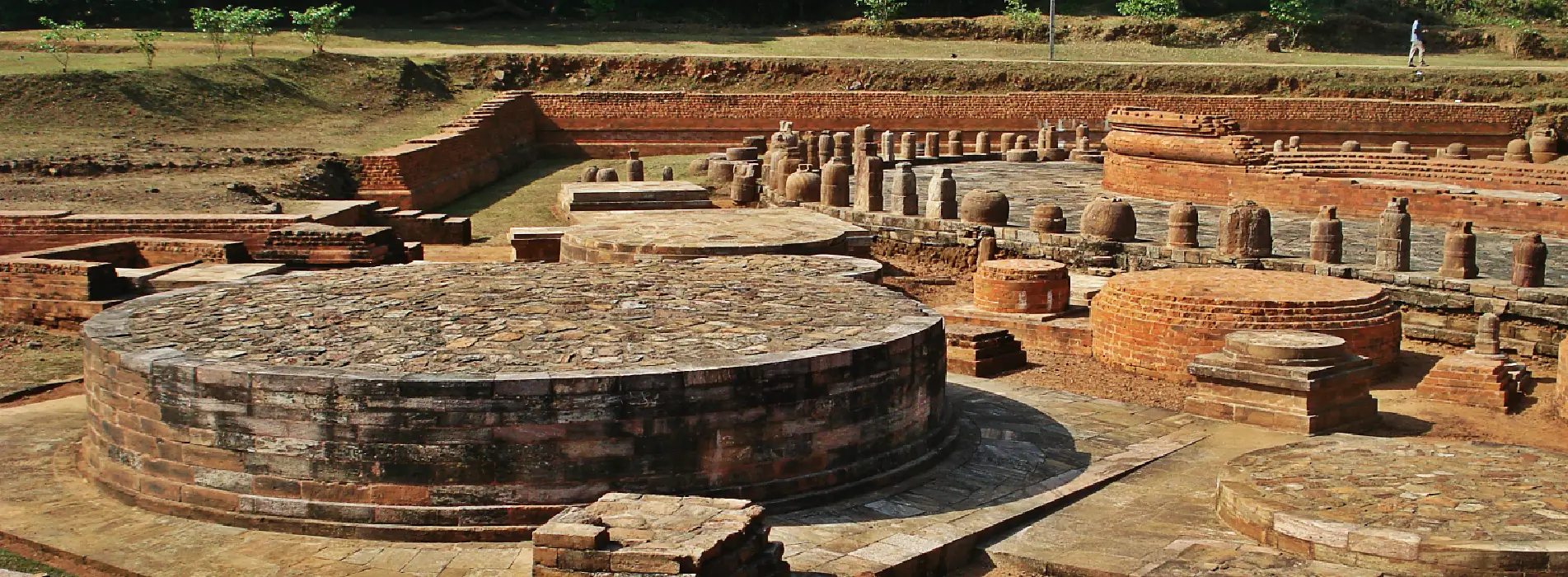Diamond Triangle, Odisha




Diamond Triangle, Odisha
Buddhism has thrived in several regions, one of which is Odisha. Indeed, it was two Ukkala merchants (Utkala, Odisha) who were the first to become regular devotees of Lord Buddha. The Diamond Triangle Tour in Odisha involves an exquisite collection of three magnificent Buddhist sites named Ratnagiri, Udaygiri and Lalitgiri. The name Diamond Triangle comes from the term Diamond vehicle. Vajrayana is known as a Diamond vehicle or Thunderbolt vehicle. The three sites belong to the Vajrayana sect of Buddhist culture and religion. Vajrayana is a system of enlightenment that involves tantric and mystical techniques. It is believed to have originated in Bengal and gradually spread to other parts of India and East Asia.
All three sites of the Diamond Triangle are under the Archaeological Survey of India (ASI) and are open from sunrise to sunset. To completely understand the impact, heritage and culture of Buddhism, visiting Ratnagiri, Lalitgiri and Udaygiri is the ideal location for a Buddhist tour in Odisha. Other than these sites there are several stupas, Mahaviharas, and sculptures that testify to the rich architectural heritage of Odisha.
The history of the Diamond Triangle dates back to the time of Ashoka, the great Mauryan emperor. Ashoka is said to be the harbinger of Buddhism in Kalinga city and the rest of India. The three Viharas of Buddhist monasteries existed before Nalanda and Taxila cities. Xuanzang, a Chinese traveler who visited the sites in the 7th century CE, mentioned the renowned Pushpagiri Mahavihara, but some other historians believe that these monasteries as Ratnagiri, Udaygiri, and Lalitgiri. The archaeological evidence indicates that these sites were built in the 5th century CE and continued to remain functional until the 13th century CE.
Udaygiri: Udaygiri is nestled between two magnificent mountain ranges of Eastern Ghats, being the biggest and most picturesque site of this Buddhist Trial. Udaygiri is said to be the least excavated site among the three. The excavation of this site started in 1985 and continued till 1990, still, some areas of the site remain unexplored. The Udaygiri monastery is divided into two parts, the Madhavpura Mahavihar and the Simhaprastha Mahavihar. The Madhavpura Mahavihar consists of a large Mahastupa along with Chaitya Grihas, Votive Stupa, Commemorative Stupa and other relics. The Simhaprastha Mahavihar is home to ruins of monasteries, meditation chambers, and intricately carved statues.
Ratnagiri: Ratnagiri is highly embraced among historians and archaeologists. The excavation of the site was between 1975-1983. According to Prof. Thomas Donaldson, Ratnagiri was a rival to Nalanda as a site of Buddhist learning. Ratnagiri is believed to be the only monastery in India to have a curvilinear roof. The Stupas, Chaityagrihas, statues of Buddha and intricately carved rooms showcase the art and architecture of the ancient era.
Lalitgiri: Lalitgiri lies between the valley of Birupa and Chitropala rivers. Lalitgiri is known as Naltigiri among the locals and is said to be the oldest among the three sites of the Diamond Triangle. The monastery of Lalitgiri was built in the 1st century AD. The site is believed to have been discovered in 1905 according to the chronicles of famous Chinese traveler, Hiuen Tsang. The ruins of Mahastupa, Chaityagriha, and other relics give an incredible feel to its visitors. The site also contains a relic casket. Tourists can also find a museum inside the monastery complex that includes artifacts and statues recovered during the time of excavations.
The Diamond Triangle site of Odisha is situated in the Jajpur district. The Diamond Buddhist Circuit tour in North east India can be started from Cuttack or Bhubaneswar. The sites are around 50 kilometers from Cuttack and around 75-80 kilometers from Bhubaneswar. One can reach these Buddhist pilgrimage centers from Bhubaneswar-Kolkata Highway (NH-12). While visiting these, it is advisable for tourists to carry dry food items like biscuits, cakes and chocolates because one will hardly find any place to buy food. The closest airport is Biju Patnaik Airport and the nearest railway station is Bhubaneswar Railway Station. Visitors can hire Volvo and regular buses, cabs or local auto-rickshaws to reach these popular Buddhist sites in Odisha. The best time to visit these locations is between November to February during the winter months when the weather is pleasant and comfortable for sightseeing.
- Timings : 9:00 AM - 5:00 PM
- Entry Fees for Indians & SAARC Citizens : 15 INR
- Entry Fees for Foreigners : 200 INR






















